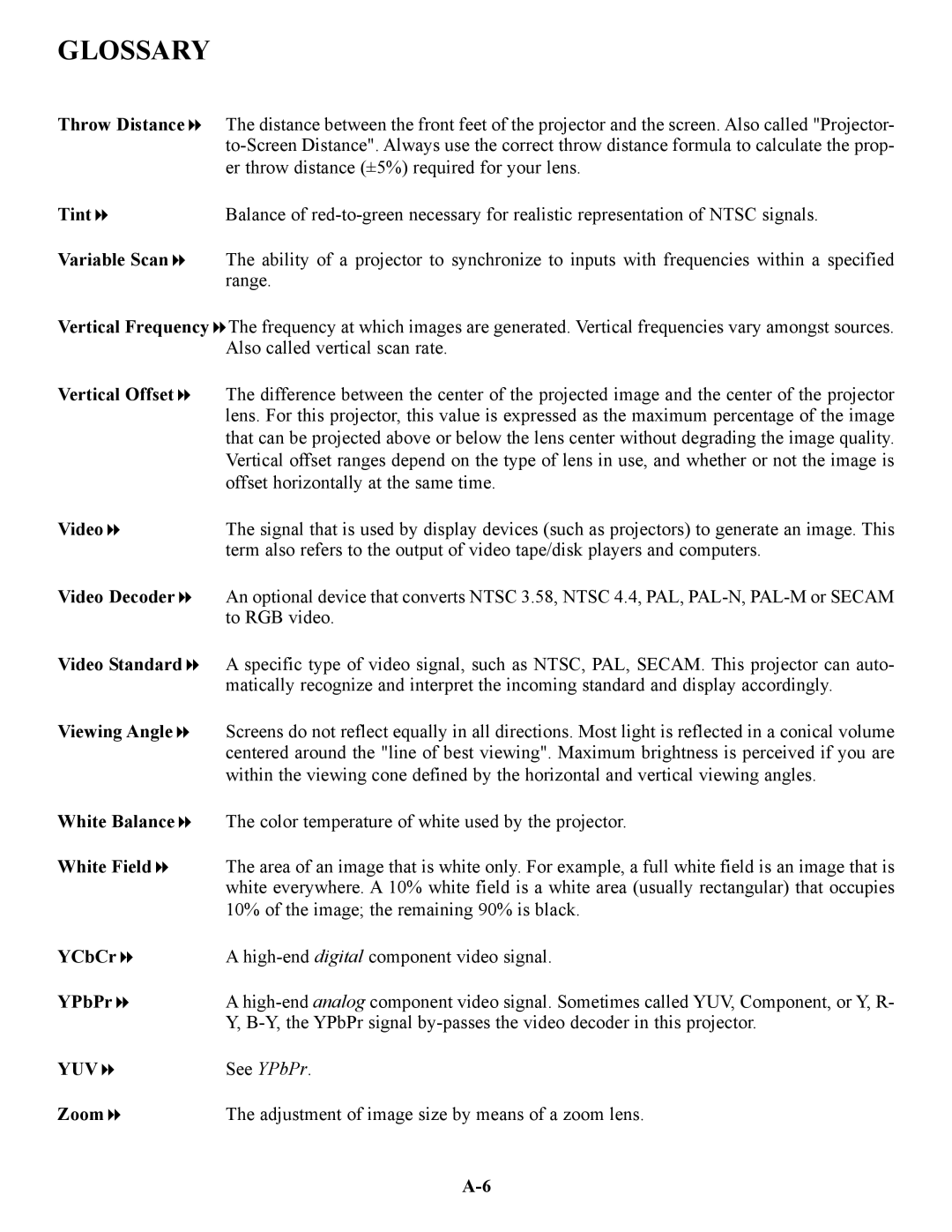GLOSSARY
Throw Distance | The distance between the front feet of the projector and the screen. Also called "Projector- |
| |
| er throw distance (±5%) required for your lens. |
Tint | Balance of |
Variable Scan | The ability of a projector to synchronize to inputs with frequencies within a specified |
| range. |
Vertical Frequency The frequency at which images are generated. Vertical frequencies vary amongst sources.
| Also called vertical scan rate. |
Vertical Offset | The difference between the center of the projected image and the center of the projector |
| lens. For this projector, this value is expressed as the maximum percentage of the image |
| that can be projected above or below the lens center without degrading the image quality. |
| Vertical offset ranges depend on the type of lens in use, and whether or not the image is |
| offset horizontally at the same time. |
Video | The signal that is used by display devices (such as projectors) to generate an image. This |
| term also refers to the output of video tape/disk players and computers. |
Video Decoder | An optional device that converts NTSC 3.58, NTSC 4.4, PAL, |
| to RGB video. |
Video Standard | A specific type of video signal, such as NTSC, PAL, SECAM. This projector can auto- |
| matically recognize and interpret the incoming standard and display accordingly. |
Viewing Angle | Screens do not reflect equally in all directions. Most light is reflected in a conical volume |
| centered around the "line of best viewing". Maximum brightness is perceived if you are |
| within the viewing cone defined by the horizontal and vertical viewing angles. |
White Balance | The color temperature of white used by the projector. |
White Field | The area of an image that is white only. For example, a full white field is an image that is |
| white everywhere. A 10% white field is a white area (usually rectangular) that occupies |
| 10% of the image; the remaining 90% is black. |
YCbCr | A |
YPbPr | A |
| Y, |
YUV | See YPbPr. |
Zoom | The adjustment of image size by means of a zoom lens. |
